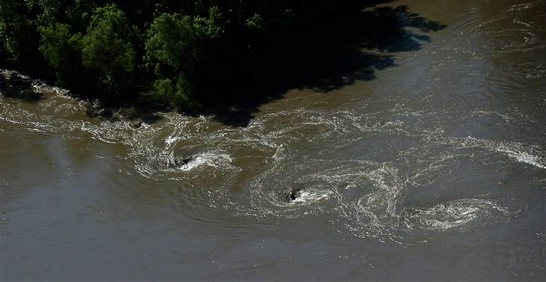

Isolated horizontal shear is a feature of boundary currents, flow near river deltas, and wakes of topographical features. The picture below shows a shear layer resulting from separation of a boundary current. Mixing and transport induced by vertical shear in a stably stratified fluid has been explored far more extensively than that case of horizontal shear. We are interested in the effects of stratification strength and rotation rate on flow dynamics. When stratification is strong, vertical gradients can dominate the flow and new instability mechanisms such as the zigzag instability emerge. The zigzag instability is shown below along with a vortex taken from a simulation of a stratified horizontal shear layer. The effects of rotation are non-negligible when length scales are of order 1 kilometer. Rotation can either stabilize or destabilize a flow field, depending on rotation rate and orientation.
 |
 |
| Horizontal shear layer in a river. | Zigzag instability. (left image) Experiment. (right image) Simulation. |